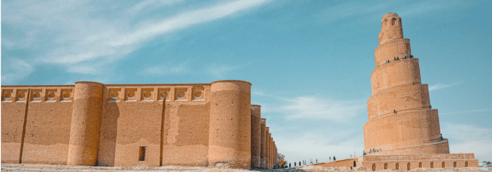Islamic civilization has produced some of the world’s most vital and historically significant buildings. In this activity, you will use the acronym “FACTS” to describe an Islamic structure. “FACTS” stands for Form, Aesthetics, Context, Technology & Techniques, and Space.
F – Form: What is the overall shape and style (modern, classical, gothic, Islamic, etc.) of the building? How does its form reflect its intended use?
A – Aesthetics: In your opinion, is the building beautiful? What materials were used (stone, glass, brick, wood, etc.)?
C – Context: What are the surroundings of the building (urban, rural, historical site, etc.)? How does the building reflect a particular culture, era, or location?
T – Technology & Techniques: What construction techniques were used (arches, domes, minarets, etc.)? Were the construction methods innovative for the time in which the building was made?
S – Space: Is the building comfortable and usable for its purpose? How are the rooms and courtyards placed? How does it incorporate light, water, or the natural landscape?
Choose 1 of the following Islamic structures:
Create a Google Slides or PowerPoint presentation about your chosen structure. On the first slide, introduce the building, including the time of construction, location, and original purpose. On subsequent slides, describe the structure in detail using the “FACTS” method. Include visuals on every slide and create as many slides as necessary.
Present your slideshow to the class and be prepared to answer questions from the audience.
Example slideshow text:
-
Introduction: The Great Mosque of Samarra, Abbasid Empire, was built between 848 CE and 851 CE by Caliph al‐Mutawakkil. It is famous for its spiral minaret, known as the Malwiya Tower, and was the largest mosque in the world at the time of its construction.
-
Aesthetics: Simple, geometric patterns with brickwork. Today, it is considered austere and beautiful. It was originally decorated with geometric and floral designs, reflecting Islamic traditions.

